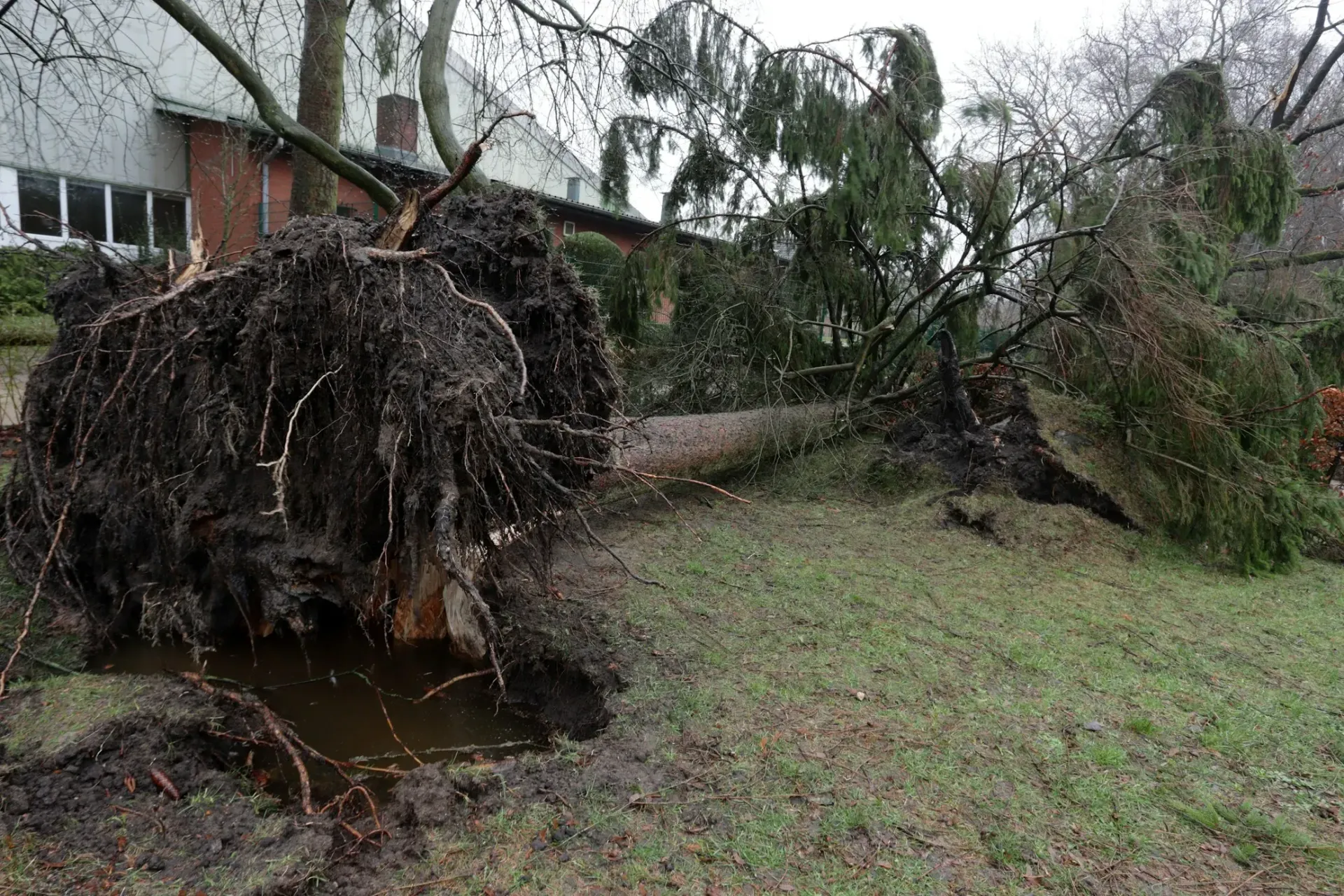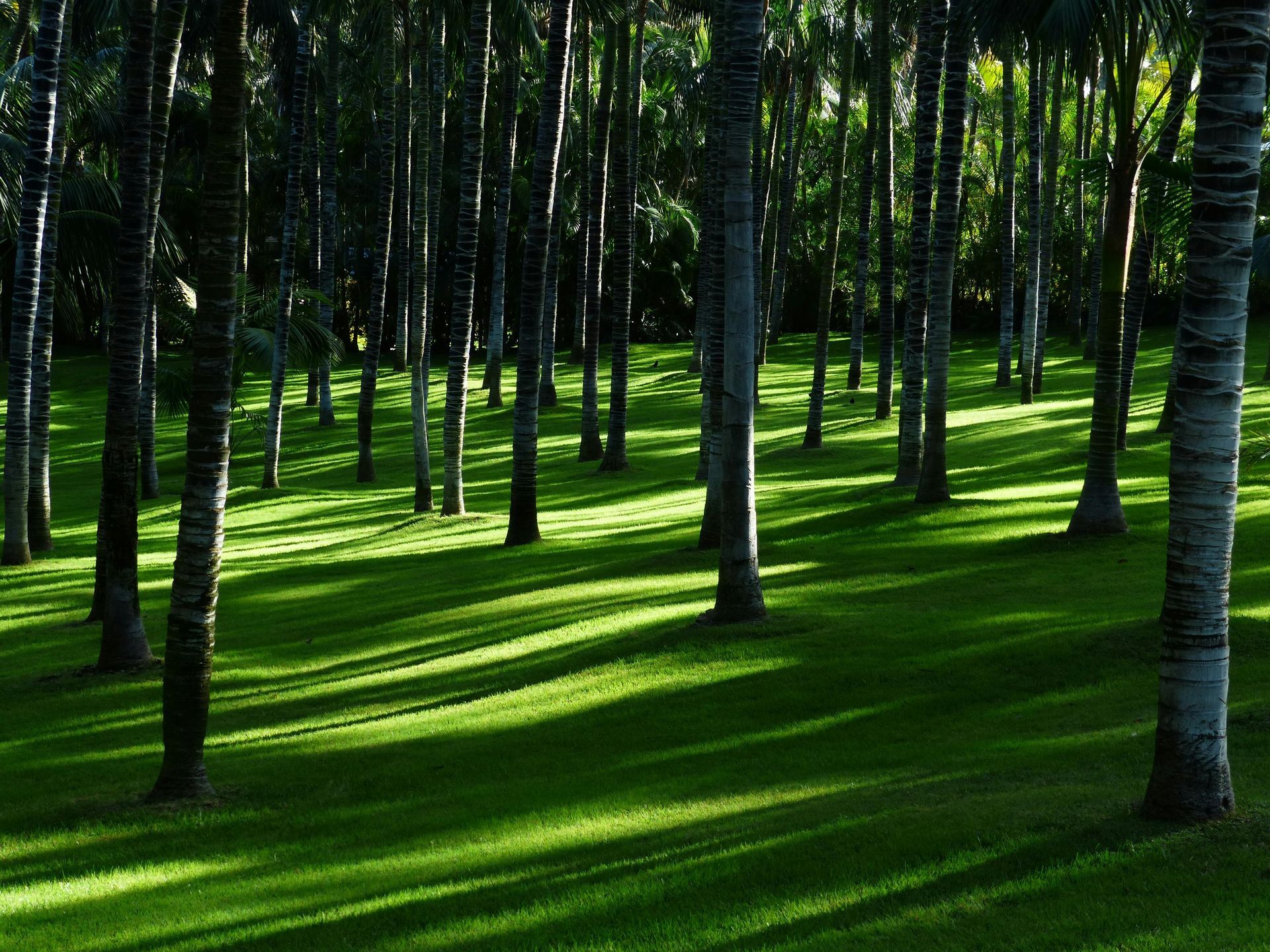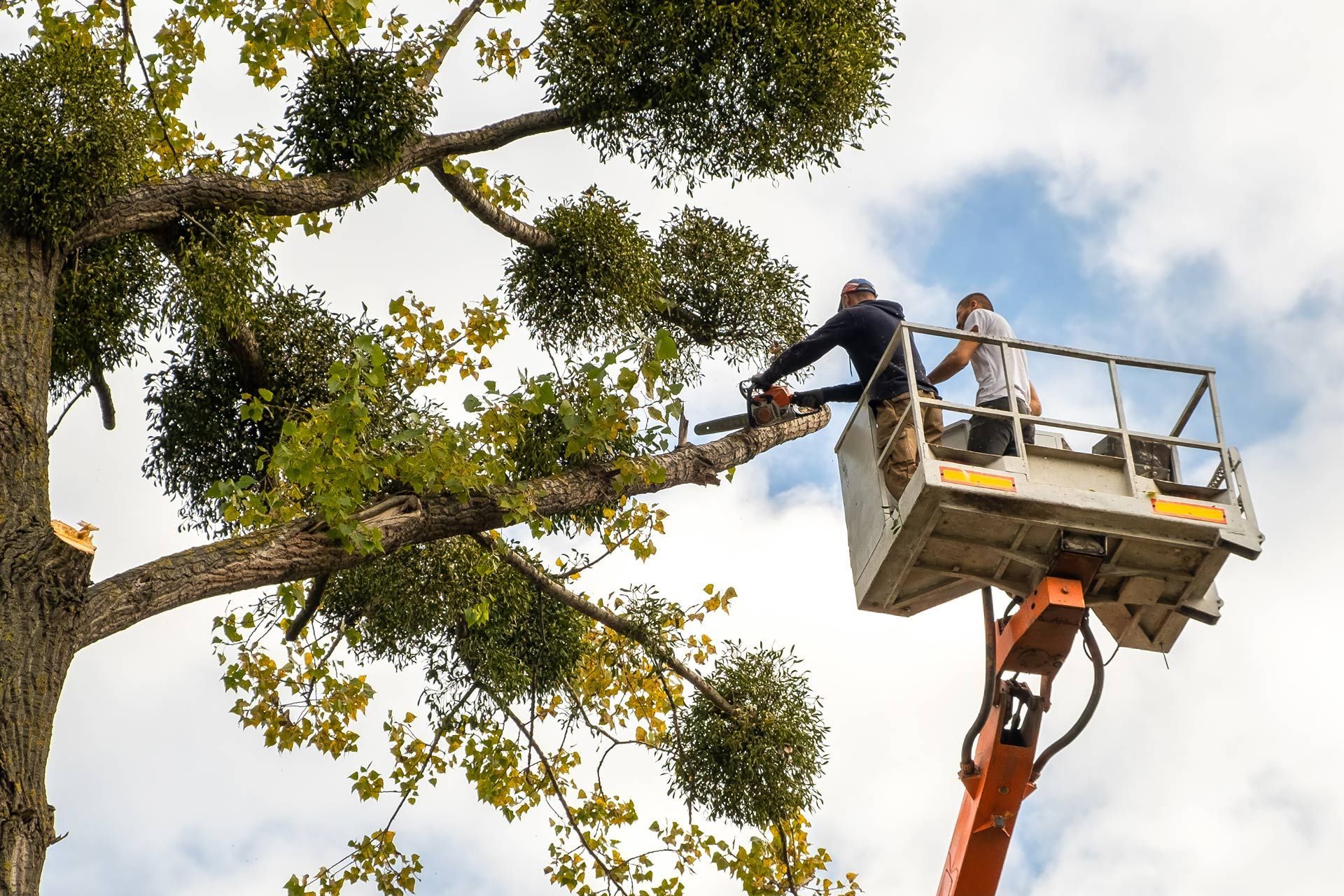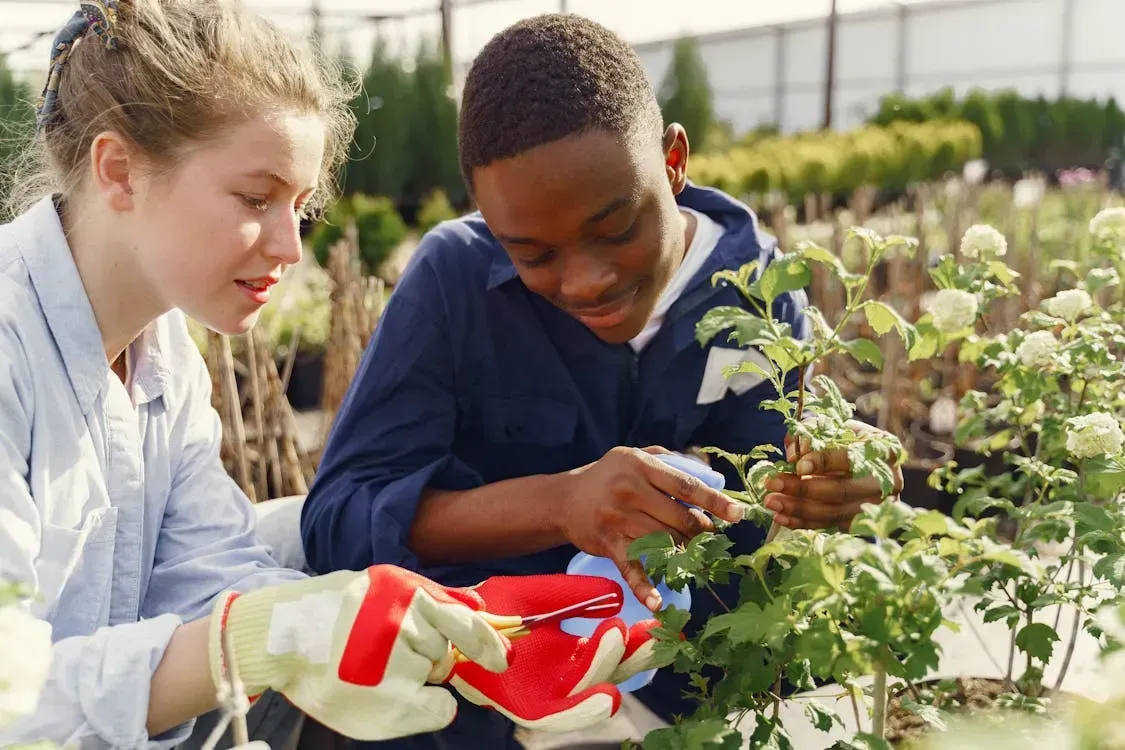Who is Responsible for Fallen Tree Removal?

Who is Responsible for Fallen Tree Removal?
Fallen trees can cause big problems. They block driveways, damage homes, and knock out power lines. When a tree falls, it’s important to know who’s responsible for cleaning it up. This can depend on where the tree is, who owns the property, and local laws. This guide will help you figure out who needs to deal with a fallen tree.
Understanding Tree Ownership and Responsibility
Tree ownership is usually based on property lines. If a tree is on your land, it’s generally your responsibility. This means you need to take care of it, trim it, and remove it if it falls. But what if the tree is on the boundary between your property and your neighbor’s? In this case, both parties might share responsibility.
If the tree falls because it’s dead or unhealthy, the owner should have taken care of it beforehand. Ignoring a tree in bad shape can make the owner liable for any damage it causes. Knowing who owns the tree is the first step in figuring out who should remove it when it falls.
Homeowner Responsibility
If a tree falls on your property, it's your job to deal with it. Here’s what you need to know:
1. When a Tree Falls on Your Property
If a tree from your yard falls and stays within your property, you're responsible for removing it. This includes clearing it and handling any damage it might cause to your house, driveway, or other structures.
2. When a Tree from Your Property Falls onto a Neighbor’s Property
If a tree from your yard falls onto a neighbor’s property, things get a bit more complicated. Generally, if the tree was healthy and fell due to a storm or other natural event, your neighbor is responsible for the portion on their land. However, if the tree was dead or clearly unhealthy and you did nothing about it, you could be held liable for the damages.
3. Financial Implications and Insurance Coverage
Check your homeowner’s insurance policy. Most policies cover tree removal if the fall causes damage to a covered structure like your house or garage. However, if the tree falls and causes no damage, you might have to pay for its removal yourself. It’s always a good idea to confirm with your insurance provider to understand your coverage.
Neighbor's Responsibility
When a tree falls from your neighbor’s yard onto your property, it can lead to disputes. Here’s what to know:
1. Responsibilities if a Tree Falls from Your Neighbor’s Yard
If a healthy tree from your neighbor’s yard falls onto your property due to a natural event, you are typically responsible for the cleanup on your side. This means you need to clear the fallen tree and handle any damage on your property.
2. Steps to Handle Disputes with Neighbors
If you believe the tree was dead or unhealthy and your neighbor ignored it, you might have grounds for a dispute. Start by talking to your neighbor. Show them the damage and discuss the situation calmly. If you can’t reach an agreement, you might need to involve your homeowner’s insurance or seek legal advice.
3. Legal Considerations and Boundary Rules
Legal rules about fallen trees can vary. In many places, if a neighbor’s tree was clearly a danger and they did nothing, they could be liable for damages. But proving neglect can be tricky. Document the tree’s condition and any communications with your neighbor. Knowing your local laws can help you understand your rights and responsibilities.
Municipal and Public Property Responsibility
When a tree falls on public or municipal property, different rules apply. Here's what you should know:
1. Who is Responsible for Trees Falling on Public Property
If a tree falls on a public street, sidewalk, or park, it’s usually the city or town’s responsibility to handle it. This includes clearing the tree and repairing any public property damage. However, if the tree originated from private property and fell onto public land, the property owner might still have some responsibilities.
2. Procedures for Reporting Fallen Trees on Public Property
If you notice a fallen tree on public property, report it to your local public works department or city hall. Many cities have hotlines or online forms for these reports. Be sure to provide clear details about the location and any immediate hazards the fallen tree might pose.
3. City’s Role in Tree Maintenance and Removal
Cities often have departments dedicated to tree maintenance on public land. This includes regular inspections, pruning, and removal of hazardous trees. If a tree on public property looks like it might fall, report it to the city so they can take preventative action.
Insurance Considerations
Understanding your insurance coverage can save you from unexpected expenses when dealing with fallen trees. Here’s what you need to know:
1. Types of Insurance that Cover Fallen Tree Removal
Homeowner’s insurance typically covers tree removal if the fallen tree causes damage to your home, garage, fence, or other structures covered by your policy. This also includes damages caused by storms, wind, and other natural events.
2. How to File a Claim for Tree Removal
If a tree falls and causes damage, take the following steps:
- Document the Damage: Take photos and videos of the fallen tree and any damage it caused.
- Contact Your Insurance Provider: Report the incident to your insurance company as soon as possible.
- Submit Required Documentation: Provide any forms, photos, and estimates for repair or removal costs.
- Follow Up: Keep in touch with your insurance adjuster to ensure your claim is processed promptly.
3. Scenarios Where Insurance Might Not Cover the Removal
Insurance usually doesn’t cover tree removal if the tree falls without causing damage, such as falling into an open yard. Additionally, if the tree was dead or neglected, your insurance might not cover removal costs or associated damages. It’s crucial to regularly inspect and maintain trees on your property to avoid these issues.
Legal Implications and Rights
Knowing your legal rights and obligations is crucial when dealing with fallen trees. Here’s a breakdown:
1. Overview of Legal Rights Regarding Fallen Trees
Generally, property owners have the right to maintain their property, which includes dealing with fallen trees. If a tree from your property falls and damages a neighbor’s property, you might be liable if the tree was unhealthy and you ignored it. On the other hand, if the tree was healthy and fell due to natural causes, your neighbor usually handles the part that falls on their property.
2. How to Handle Legal Disputes
If disputes arise, start with a friendly conversation. Discuss the damage and try to reach an agreement. If this doesn’t work, consider mediation, which is a less formal and cheaper option than going to court. Legal action should be your last resort, as it can be time-consuming and costly.
3. Common Laws and Regulations
Laws can vary by location, but some common principles apply:
- Negligence: If a property owner neglects a dangerous tree and it falls, causing damage, they can be held liable.
- Act of God: If a healthy tree falls due to a storm or other natural event, it’s usually considered an "act of God," and the owner might not be held liable.
- Boundary Trees: Trees on the property line are typically shared responsibility. Both property owners need to agree on major decisions like removal.
Understanding these laws can help you navigate your responsibilities and rights regarding fallen trees.
Preventative Measures
Preventing trees from falling can save you a lot of trouble. Here’s how to keep your trees healthy and safe:
1. Tips for Maintaining Trees to Prevent Falls
Regular maintenance is key to preventing trees from falling. Here are some tips:
- Prune Regularly: Remove dead or weak branches to reduce the risk of falling.
- Water Properly: Ensure trees get enough water, especially during dry spells.
- Fertilize: Provide essential nutrients to keep trees strong.
- Inspect Frequently: Look for signs of disease, pest infestations, or structural weakness.
2. Professional Tree Inspection Services
Sometimes, it’s best to call in the experts. Professional arborists can:
- Assess Tree Health: Identify diseases, pests, or structural issues.
- Recommend Treatments: Suggest ways to treat or strengthen ailing trees.
- Safely Remove Dangerous Trees: If a tree is beyond saving, professionals can remove it safely.
3. Importance of Regular Tree Maintenance
Regular maintenance not only prevents falls but also ensures your trees stay healthy and beautiful. Well-maintained trees can enhance your property’s value and curb appeal. Moreover, addressing potential issues early can save you from costly damages and liability in the future.
Hiring Professional Services
Sometimes, dealing with a fallen tree requires professional help. Here’s what you need to know about hiring experts:
1. When to Call a Professional Tree Removal Service
You should call a professional if:
- The Tree is Large: Large trees can be dangerous to remove without the right equipment and expertise.
- The Tree is Near Structures: Trees close to homes, power lines, or other structures need careful handling to prevent further damage.
- The Tree is Diseased or Dead: These trees can be unpredictable and might require specialized equipment to remove safely.
2. How to Choose a Reliable Tree Removal Company
When selecting a tree removal service, consider these factors:
- Credentials and Insurance: Ensure the company is licensed and insured to protect yourself from liability.
- Experience and Reputation: Look for companies with positive reviews and a track record of safe and effective tree removal.
- Get Multiple Quotes: Compare prices and services from different companies to find the best deal.
- Ask for References: Speak with past clients to gauge their satisfaction with the service.
3. Cost Considerations for Professional Tree Removal
The cost of tree removal can vary based on several factors:
- Tree Size and Location: Larger trees and those in difficult-to-reach areas typically cost more to remove.
- Condition of the Tree: Removing a dead or diseased tree may require special handling and equipment, increasing costs.
- Additional Services: Some companies offer stump grinding, debris removal, and other services for an extra fee. Always ask for a detailed estimate to understand what’s included.
Hiring a professional ensures the job is done safely and efficiently, reducing the risk of damage and injury.
Conclusion
In conclusion, knowing who is responsible for fallen tree removal is crucial to avoid disputes and manage potential damages. Here’s a recap of key points:
- Tree Ownership and Responsibility: Understand property lines and who owns the tree.
- Homeowner Responsibility: Know what to do if a tree from your property falls on yours or a neighbor's property.
- Neighbor’s Responsibility: Handle disputes calmly and know your legal standing.
- Municipal and Public Property: Report fallen trees on public land to local authorities.
- Insurance Considerations: Check your policy for coverage details and file claims properly.
- Legal Implications: Be aware of common laws and your rights.
- Preventative Measures: Regular tree maintenance can prevent many issues.
- Hiring Professional Services: Choose reliable professionals for safe tree removal.
Understanding these responsibilities and taking preventative measures can help you handle fallen trees effectively, ensuring safety and peace of mind.
Call to Action
When it comes to tree care, don't settle for anything less than the best. Trust Troyer's Tree Service for all your tree removal, tree trimming, stump grinding, and lot clearing needs. Based in West Farmington, we proudly serve Solon, Warren, and Chargin Falls.
Our dedicated team of professionals combines traditional techniques with modern technology to deliver top-notch service. We prioritize your satisfaction, ensuring your property remains beautiful and safe.
Why Choose Troyer's Tree Service?
- Tree Removal: Safely and efficiently removing hazardous or unwanted trees.
- Tree Trimming: Artistic trimming to keep your trees healthy and beautiful.
- Stump Grinding: Effective removal of unsightly stumps.
- Lot Clearing: Preparing your land for future development.
Don't wait until it's too late. Enhance the safety and beauty of your property today. Contact Troyer's Tree Service for a free consultation and see why we are the trusted choice for tree care in West Farmington, Solon, Warren, and Chargin Falls.










